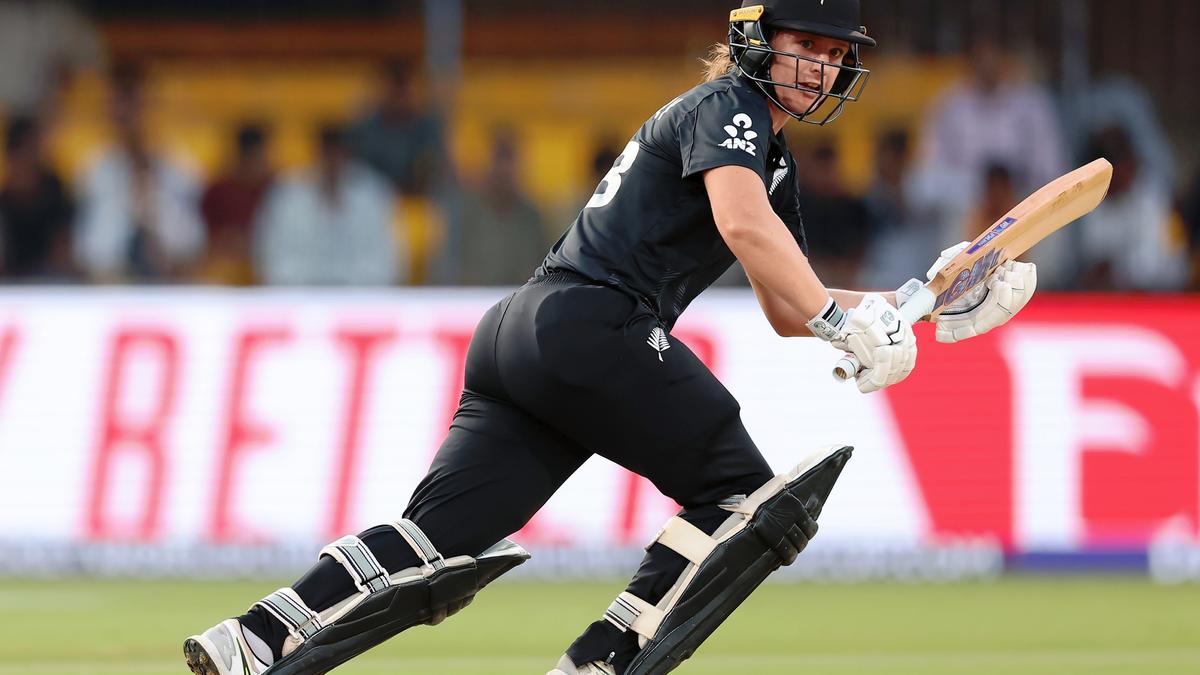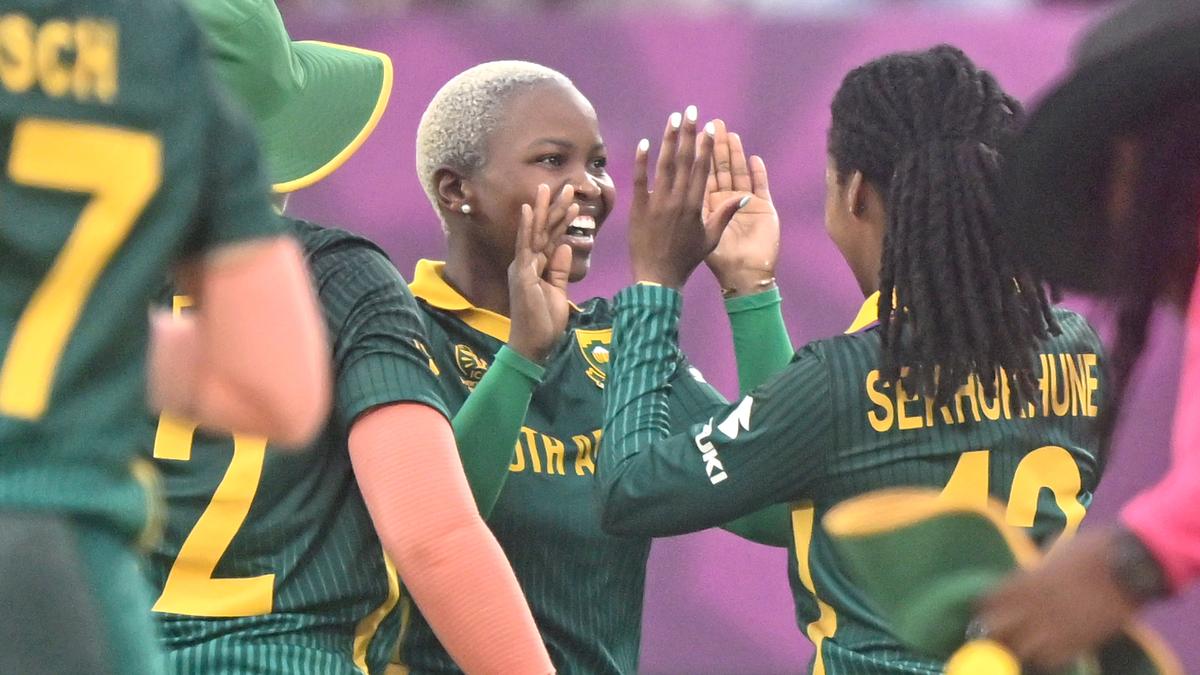There’s an easygoing warmth to Brooke Halliday — jovial, soft-spoken, and modest about her achievements — guided by her belief in “staying true to herself” no matter the circumstance.
From weekend cricket at the Manukau City Cricket Club in Auckland to representing New Zealand on the world stage, the 29-year-old has become a steady hand in a team navigating transition.
Over four years since making her international debut, the all-rounder has quietly evolved into one of the White Ferns’ dependable middle-order batters, a handy wicket-taker and an emerging leader. In an interaction with The Hindu, she opens up about her cricketing roots, lessons learned from stalwarts, how she balances her role and her perspective and more. Excerpts:
Your introduction to the sport has an interesting familial history. Could you elaborate on that?
A little bit of family history is there. So, my dad and my uncles played cricket every Saturday down at a ground in Auckland, the Manukau City Cricket Club. My grandfather and my great-uncle also played for the club.
From there, my brother and I ended up playing junior cricket, with our father coaching us. I have a few other brothers who also play. But that is where it all started. When you see your dad, uncle, and brother all doing something, you naturally end up doing the same thing.
Cricket surely has its moments. But otherwise, I have enjoyed it right from the start.
It’s been over four years since you made your international debut. You’ve seen a few stars exit, on the cusp of retirement and new entrants find their footing. How has the transition process been for the team and for yourself?
Over the last 12-18 months, my role has changed in the sense that I am probably looked at as more of a leader in the group, which at times doesn’t come too naturally to me. I’m not the most outspoken person. I probably lead others not through words, but more through actions.
One thing that I have been able to do recently, from a batting point of view, is support the young ones coming through, like Izzy Gaze, Georgia Plimmer, and a couple of players whom I have been able to spend a little time with batting out in the middle, but also off the field. Just communicating with them on how I do things, and maybe they might be able to implement something into their own game.
A few days ago, Georgia and I were talking about how I played in the game against Bangladesh. She was asking questions about how she might be able to take in something and learn from it.
With the likes of Sophie (Devine) departing shortly, my role will change. We will be losing a lot of experience. Then it will become a “How can I still be me but also help lead others in the team?” It will just be being true to myself, while keeping in mind what others need.
You have shared the dressing room with some of the greatest players the women’s game has seen — Sophie Devine and Suzie Bates. What are some of the things you have learnt from them and would like to inculcate?
The biggest thing I have learnt from Suzie and Sophie is the way they trust their abilities. Just a prime example, but not the nicest one: Suzie started this tournament with two ducks, and a lot of people would maybe cave. But Suzie is being Suzie and staying true to herself.
Being able to see someone of that calibre take the criticism on board and be in a sticky situation, but go out there with a smile on their face is great. But she is still contributing to the team in other ways. What has also been the coolest thing is seeing how they prepare, and that hasn’t changed for Suzie at all despite the runs.
Something that I have also learnt is how not to ride the highs and lows of cricket because it can be tough at times. Suzie, Sophie and even Lea (Tahuhu) have all shown us, the younger ones coming through the international stage, how to stay true and trust your abilities, reminding us that we are here for a reason, backing yourself and enjoying the game.
Coming to the T20 World Cup triumph in 2024, you made significant contributions — a crucial partnership with Amelia Kerr, taking the big wicket of South Africa’s Sune Luus. What were the emotions and thoughts on that day?
I actually didn’t realise I had bowled in the game until I heard a couple of the coaches and players. We even asked ChatGPT, “How did the White Ferns win the T20 World Cup final?” And that mentioned me bowling. But I have no recollection of my bowling.
From an emotional point of view, it’s actually all a blur. I was just fortunate that day that the shots that I played, whether it’s the reverse or going deep in my crease and sweeping it, all paid off. I was able to change that momentum and also put us in a position to have a competitive total. It was a big win and a great achievement for us in the end.
Pitching in with timely knocks has become a norm for you of late, be it the 69 against Bangladesh recently, the 86 — your highest ODI score so far — against India in the 2024 series decider. How do you prepare yourself for that?
The biggest part of batting at No. 5 is that you never really know what position you are going at. At times, it could be to continue the momentum that the top-order has built or change it in a way that puts us in favour. I have to go in with quite an open mind. And what I keep true to myself is keeping things simple.
The day, last year in India, when I got that 80-odd runs [86], was exactly that. We were in a tough position. I just tried to simplify it as best as possible, watch the ball and get myself into a position where I can get our team a winning chance.
Similarly, a couple of days ago, in that situation (against Bangladesh), I just needed to play a very boring brand of cricket. I had to get the ones and the dots, and build that partnership with Sophie (Devine). I just go out there and focus on watching the ball, and back my strengths.
The women’s game has seen a change in tides, with high-scoring matches being a lot more common and the competitiveness in general. What’s your take on this?
The women’s game, in particular, has grown so much — the professionalism, a lot more players who are now full-time cricketers. The competitions around the world, like the Women’s Premier League, the Women’s Big Bash League and the Hundred, are making the quality of cricket a lot better. And that means the international game is also growing.
Just a few days ago, we saw Australia chase down 330, which was absolutely crazy. It just shows that it doesn’t really matter what the score put out there is; every team is capable of chasing it down.
New Zealand was one of the first cricket boards to introduce equal pay for the men’s and women’s teams. How has the impacted the cricket ecosystem with respect to development, talent identification and competition level?
Having equal match payments as the men have allowed players the freedom to focus full-time on cricket which, in turn, has helped develop our game.
The cool thing about the ‘White Ferns 17 contract’ is that, say, five players here can go back and show the ones that are part-time how to train purposefully and in a way that will help them to be better cricketers. From there, the flow and effect again is that the quality of games is going to get better.
In the last couple of years, we’ve had the NZ-A programme reintroduced to the women’s pathway, which is another opportunity for a wider scope of players to develop their game at the next level and push for spots at the international level.
The amount of cricket we play in New Zealand has also increased — we have squad games, North vs South.
The more cricket that we get to play, the better cricket we’ll play, which will help improve the quality of players that come through our system. It’s a stepping stone in the right direction.


